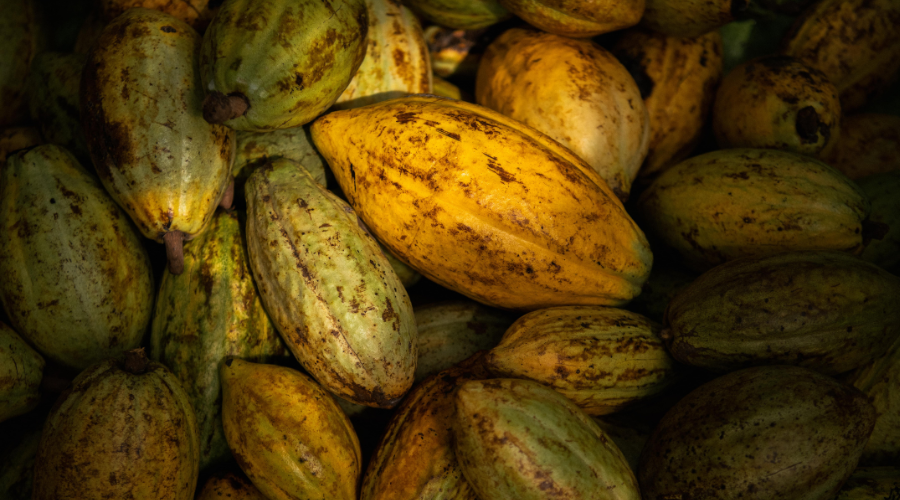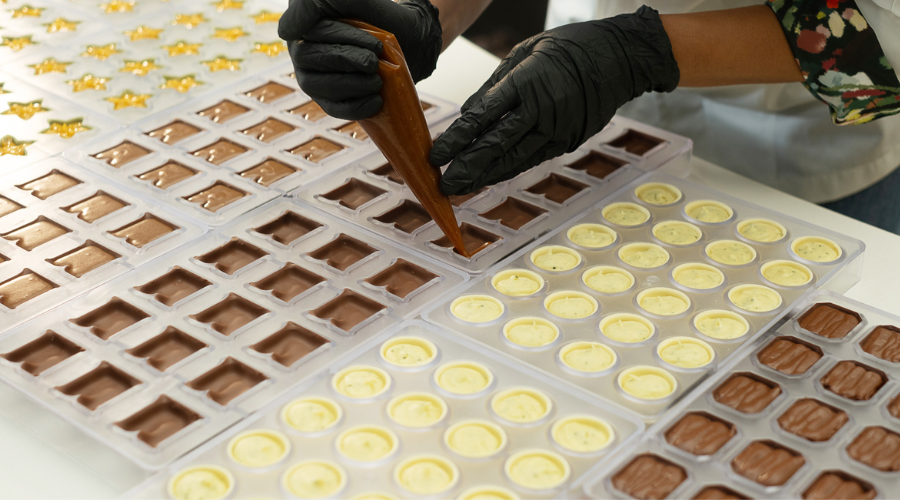Can India Become The World’s Next Cocoa Powerhouse?
Can a climate that is favourable for cocoa production, an evolving domestic chocolate market, and a global supply deficit, make India the world's next cocoa powerhouse?
If one had to list things that people across age brackets universally love, chocolate would undeniably be on the list. From helping my 50-year-old diabetic father steal a cube of Frigor (his favourite chocolate) from the refrigerator to gifting a bouquet of chocolates to my little cousin (against her mother’s will), chocolate is loved by all.
But India’s tryst with chocolate is not just limited to the role of a happy consumer. It goes way back. The cultivation of this multi-crop took off in the country in the 1960s when Cadbury, in collaboration with the World Bank and Kerala Agricultural University (KAU), launched cocoa-cultivation initiatives in India. What we receive as a well-packaged bar starts as a cocoa plant in fields across Southern India, including Andhra Pradesh, Karnataka, Kerala, and Tamil Nadu. Additionally, according to the latest data released by the Directorate of Cashewnut and Cocoa Development (DCCD), 2023-24, Indian soil under cocoa cultivation was over 1 lakh hectares.
However, despite consistently rising in its cultivation and finding a place on the list of the world’s top 20 cocoa producers, “India continues to import more than 70 per cent of its cocoa needs,” said Chaitanya Muppala, Founder Manam Chocolate & CEO Distinct Origins Pvt Ltd.
Is Cocoa A Lucrative Crop For Farmers In India?
Cocoa is a water-intensive multi-crop that grows best between 21°C and 30°C and prefers humid weather with over 2000 mm of rainfall annually. “Cocoa prefers well-drained, aerated soil and cannot tolerate waterlogging for more than 4 to 5 days,” said Minimol J.S., professor and head of the Cocoa Research Centre at KAU.
Places across Southern India offer a climate well-suited for cultivating the tropical crop. “Being a plant that grows between the gaps of other crops such as coconut, arecanut, and nutmeg, cocoa is quite beneficial for the farmer as it allows them to utilise their land better and have multiple sources of stable income at once,” said Partha Varanshi, a regenerative farmer who runs Varanashi Organic Farms in Karnataka.

In addition to being productive for the farmers, Varanshi mentioned how cocoa is rich in biomass and has plentiful leaves that fall from season to season, providing a great mulch cover for the soil. “It also enriches the nutrients in the soil, eventually, reducing the need for fertigation,” he added.
Paired with cocoa’s productive nature for the farmer and the land, India’s rising chocolate consumption also makes the crop a lucrative option for the country’s farmers.
According to data released by the International Market Analysis Research and Consulting Group (IMARC), the country’s chocolate consumption is expected to exceed 1,56,000 tons by 2026, with a market of USD 5.3 billion by 2032.
The Rise Of India’s Craft-Chocolate Industry
India’s chocolate industry is not only experiencing a surge, but also an evolution. The advent of the bean-to-bar culture (chocolate made from scratch by the same manufacturer) and craft chocolates has changed the chocolate-eating experience and an Indian farmer’s relationship with their crop.
“The bean-to-bar movement has renewed hope, enthusiasm, and motivation among cocoa farmers. It has allowed them to invest in improving the quality of their beans, fermenting, and drying protocols and thus, charge higher prices for their produce,” said Nitin Chordia, India’s first certified chocolate taster and the co-founder of Cocoatrait, a bean-to-bar chocolate brand.
Manam Chocolate, which defines itself as a before-the bean-beyond the bar chocolate brand, buys cocoa pods or fruits, instead of beans, from its 200 farmers in the West Godavari region of Andhra Pradesh. “Since we buy the fruit from the farmer, we then use proprietary post harvesting fermentation processes to make high-quality cacao beans. Thereby we not only make more premium chocolates at Manam Chocolate but also export the cocoa beans to international craft chocolate makers at a much better price . This allows us to pool better profits for our farmers,” said Muppala.

He also mentioned how undertaking the fermentation process of the cocoa beans takes away the cost and effort of fermentation and drying from the farmer, and finds a changed vocabulary among the member farmers regarding their crop.
“I only share my profit with my farmers. Earlier, the conversation was about higher yield over good quality. Today they talk about ways to cultivate and harvest cocoa that will improve the flavour of the beans and thus, the chocolate made from it ,” he added.
Others mentioned how upcoming craft chocolate brands are allowing farmers to realise the value of their crop, improve their produce for better flavour profiles, and secure higher prices. “Craft chocolates are thus creating justice for all three—the 5000-year-old plant, the farmers, and the consumers,” said Varanshi.
The Future Of India’s Chocolate Industry
This growth of India’s chocolate industry and the favourability of its soil towards cocoa allows our country to fill a void in the global market, created by crop failure in countries across West Africa last year.
A combination of diseases, including Cocoa Swollen Shoot Virus Disease (CSSVD), Black pod disease and high temperatures led to large-scale crop failure in countries like Ivory Coast, Ghana, Nigeria and Cameroon. Under a global supply deficit and a rise in prices, the area of India’s soil under cocoa cultivation went up.
This situation sets the stage for India’s farmers to become an important player in the world’s cocoa market.

In such a scenario, Chordia recommended, “Instead of buying cocoa pods and adding value by themselves, craft-chocolate makers should try to be inclusive and disseminate the latest post-harvest technology and knowledge to the farmers.”
This would reinforce their current livelihood with high prices, ensure an empowered future generation, and help farmers stay away from the situation that West Africa fell into last year.
“If craft chocolate makers do not embrace this vision, the future of the Indian cocoa farmer would be predictable and discouraging,” added Chordia.